VMware Workstation is one of the best Virtual Machine Software. It is good but obviously not perfect. It has its fair share of issues. This post features solutions to fix the VMware error message Not enough physical memory is available to power on the virtual machine with its configured settings. This error can occur if native applications or services have locked down memory preventing the virtual machine from launching.
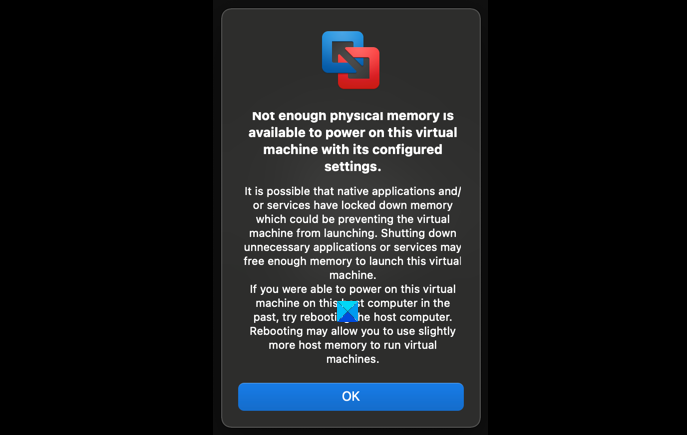
What causes Not enough physical memory is available in a Virtual Machine?
Here are a few possible reasons this VMware error may occur:
- Low memory allocated to the Virtual Machine
- Misconfigured settings
- Outdated VMware Version
Not Enough Physical Memory is Available to Power on the Virtual Machine
The reason behind this error is quite uncanny. But most of the time, it is because of low RAM. You can fix the Not enough physical memory is available to power on the virtual machine with its configured settings error message by following these suggestions:
- Adjust VMware Memory Settings
- Run VMware as an administrator
- Alter Config file
- Roll back Windows Update/Upgrade
- Update VMware.
Let us talk about them in detail.
1] Adjust VMware Memory Settings
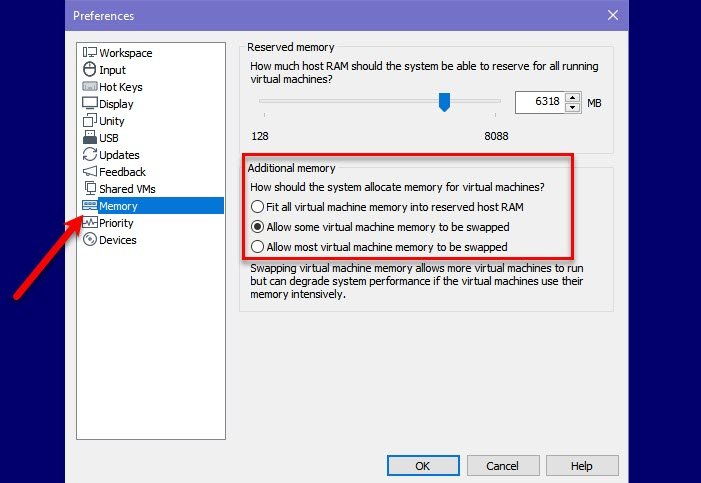
Low memory allotted for the Virtual Machine on VMware can be responsible for this error. Needless to say, some other memory settings should be altered to fix the error and we are going to do that in this section.
To do that, you can follow the given steps.
- Launch VMware.
- Click Edit > Preferences.
- Go to the Memory tab and from the Additional memory section, you can select options according to their description given below.
-
- Fit all virtual machine memory into reserved host RAM: If you have a large memory, select this option
- Allow most virtual machine memory to be swapped: If you have some extra memory that you wouldn’t mind being used by the VM, select this option.
- Allow some virtual machine memory to be swapped: If you don’t have any extra memory, select this option.
You can also increase the Reserved Memory with the help of the slidder from the same window. After configuring the setting, click OK and see if the issue persists.
2] Run WMware as an administrator
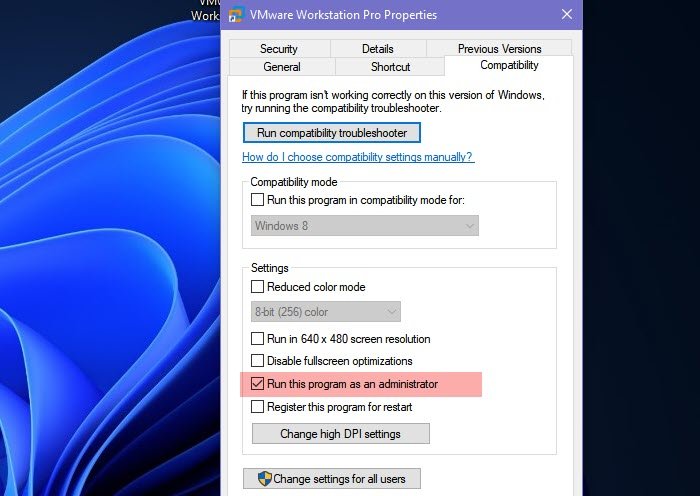
You need administrative privileges to enjoy VMware to the fullest. You can right-click on the app and select Run as an administrator to give the app administrative privileges. But let us see how to always open VMware as an administrator. To do that, follow the given steps.
- Right-click on the VMware shortcut and select Properties.
- Go to the Compatibility tab, tick Run this program as an administrator, and click Ok.
Now, check if the issue is fixed.
3] Alter Config file
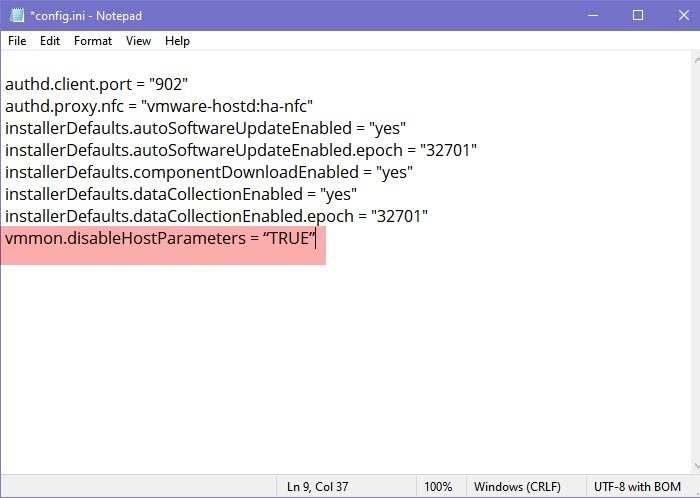
We are going to alter the Config file to ensure that VM only uses 75% of RAM. This will improve the RAM optimization and hence will fix the error.
Launch File Explorer and go to the following location.
C:\ProgramData\VMware\VMware Workstation
Open Config.ini and append the following line in it.
vmmon.disableHostParameters = “TRUE”
Now, reboot your computer and check if the issue is fixed.
4] Roll back Windows Update/Upgrade

If the issue occurred after Windows Updates, you might consider uninstalling the Update. To uninstall an update, follow these steps:
- Press the Windows key + R to open the Run dialog box.
- Type appwiz.cpl and hit Enter.
- In the Uninstall or view a program page click on View Installed Updates.
- Right-click on the recently installed update and select Uninstall.
If it has occurred after you installed a Feature Update, then this post will show you how to roll back the Feature Update.
5] Update VMware
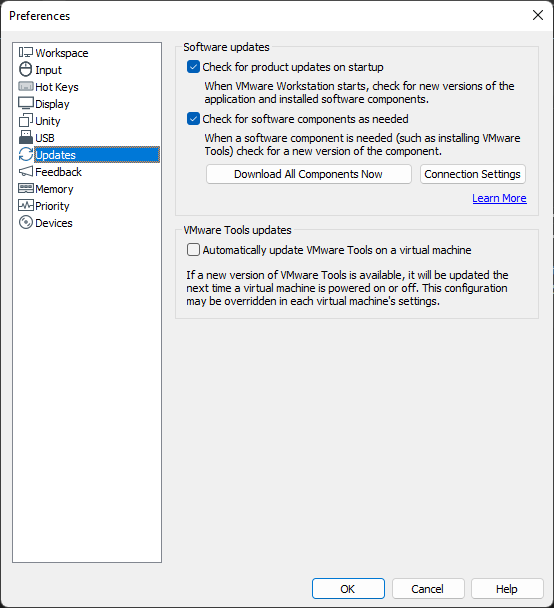
If none of the above steps were able to help you, it’s possible some internal files of VMware need to be updated. To fix this, update VMware to its latest version. Here’s how:
- Launch the VMware Workstation and click on Edit.
- In the Edit menu select Preferences.
- Navigate to the Updates tab, check both options under Software Updates and click on Download all components now.
- VMware will now automatically scan and install any available updates.
Hopefully, these solutions will fix the error for you.
Fix: VMware does not support the user level monitor of this host
How do I fix Not enough memory in the system to start the virtual machine?
The best way to fix the Not enough memory in the system to start the virtual machine error is by increasing your Memory. However, you can also try closing unnecessary apps. Apart from that, it is recommended to allocate more RAM to your virtual machine before trying again.
How much RAM do I need to allocate a VM?
This depends on the operating system you’re using. However, a minimum of 2 GB of ram is recommended. But if you want to use hardware-accelerated graphics features or 3D workloads, VMware recommends two virtual CPUs and 4GB of RAM.
Read: How to add TPM to VMware Player Virtual Machine in Windows 11.
Is 8 GB enough for VMware?
8 GB is more than enough for VMware. You should at least allocate 4 GB of RAM to VM, but the more the better. However, if you want to run more than one VM, 8 GB wouldn’t be enough. You attach another 8 GB stick before creating multiple VMs, otherwise, your system will start stuttering.